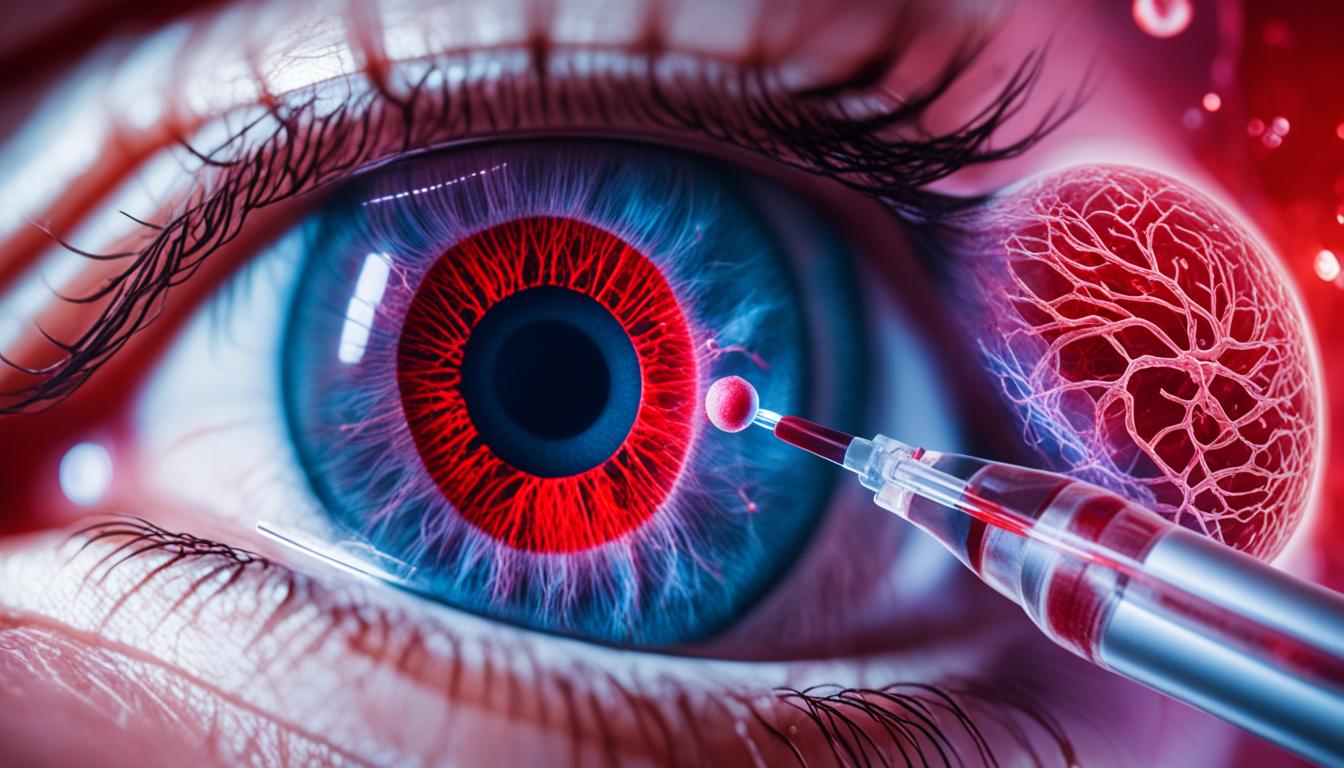Diabetic retinopathy is a common problem for people with diabetes. It’s the main reason for vision loss in adults. This problem damages the blood vessels in the retina, the part that senses light at the back of the eye.
High blood sugar levels over time can harm these blood vessels. This damage can hurt blood flow and cause abnormal blood vessels on the retina’s surface. People may notice blurred or distorted vision, floaters, and if untreated, vision loss.
To find out if one has diabetic retinopathy, an eye exam is needed. This exam might involve widening the pupils to see the retina clearly. Bad control of blood sugar, high blood pressure, high cholesterol, and having diabetes for a long time can make one more likely to get this condition.
It’s very important to find and treat diabetic retinopathy early. This helps prevent or slow down vision loss. Right now, treatments like laser therapy and injecting anti-VEGF agents can help. But, stem cell therapy is becoming a new and exciting option.
Key Takeaways:
- Diabetic retinopathy is a common complication of diabetes and a leading cause of vision loss in adults.
- It damages the blood vessels in the retina, leading to blurred vision, floaters, and eventual vision loss.
- A comprehensive eye exam, including pupil dilation, can find diabetic retinopathy.
- Risk factors include poor blood sugar control, high blood pressure, high cholesterol, and longstanding diabetes.
- Early diagnosis and treatment are key to preventing or slowing vision loss.
- Current treatments for diabetic retinopathy include lasers and anti-VEGF shots.
- Stem cell therapy is becoming an important new option for treating diabetic retinopathy.
Stem Cell Therapy for Diabetic Retinopathy
Stem cell therapy offers hope for treating diabetic retinopathy, a serious issue of diabetes that affects eyes. Stem cells can become different cell types, including the ones in the retina. This includes cells like retinal nerve cells. Scientists are looking at various stem cells for their potential to help with retinopathy.
Especially, progenitor stem cells like CD34+ cells have shown good results in animals. In tests with diabetic mice and rats, these cells could find and fix retina damage. This led to better vision. This discovery gives strong support for more research on using stem cells for diabetic retinopathy.
Now, there are clinical trials testing stem cell therapies for this eye problem. The goal is to figure out the best ways to treat it, how safe and useful it is over time, and who can benefit the most. Even though there are still challenges, using stem cell therapy could change how we manage diabetic retinopathy. It could help avoid vision loss.
Advantages of Stem Cell Therapy for Diabetic Retinopathy:
- Ability to repair damaged retinal cells
- Potential to slow down the progression of diabetic retinopathy
- Possibility of preserving and improving vision
- Opportunity for non-invasive treatment
- Potential to reduce the need for frequent and invasive interventions
The progress in stem cell research is exciting. We hope stem cell therapy will soon be a widespread treatment for diabetic retinopathy. By using the regenerative power of stem cells, we could decrease vision loss caused by this problem. This would enhance the lives of people with diabetes.
Conclusion
Diabetic retinopathy is a major issue linked to diabetes. It can lead to losing sight if not handled right. Current treatments work to slow the disease but better options are needed.
Stem cell therapy shows a lot of potential in treating diabetic retinopathy. Stem cells can replace the damaged cells in the eye’s retina. This can make a big difference in how well people see.
Doctors are conducting tests to see if stem cell treatments are safe and work well for this condition. If successful, this new kind of therapy could help people with diabetes keep their sight and lead better lives. It offers a lot of hope for anyone dealing with diabetic retinopathy.

